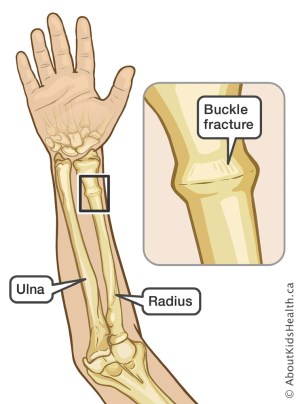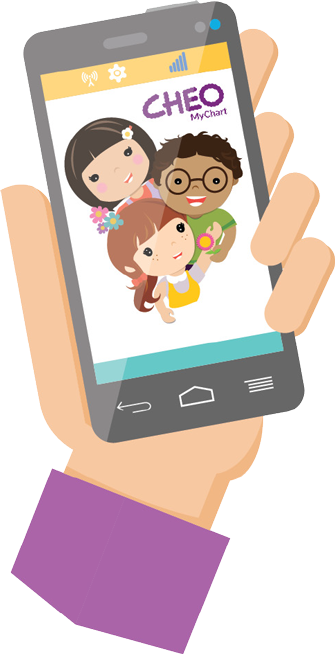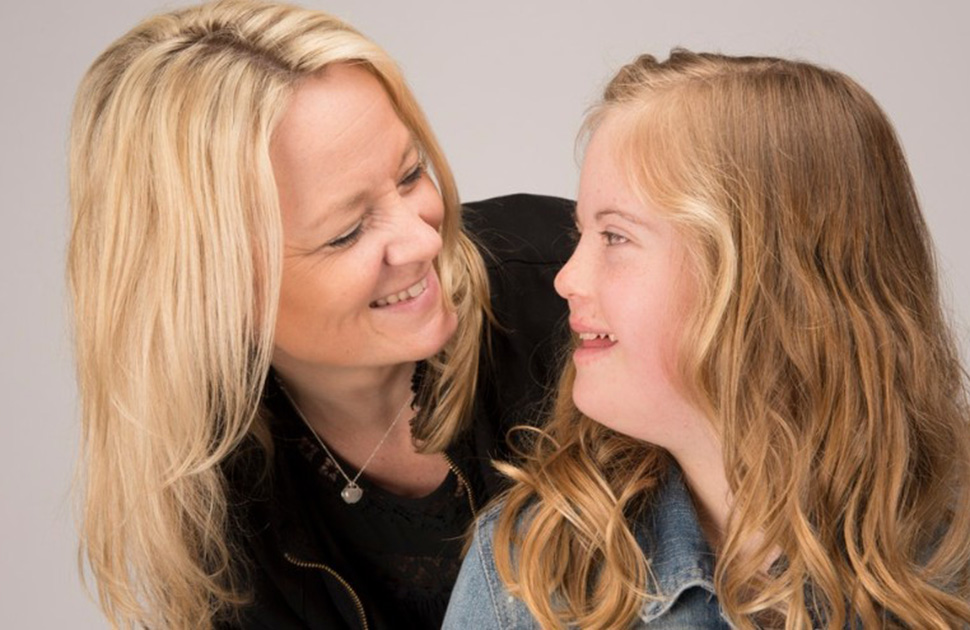
About distal forearm buckle fractures
Fractures, or broken bones, are a common reason for children and youth to visit the Emergency Department. The forearm is made up of two bones—the radius and the ulna. Because children and youth are very active and often break a fall with an outstretched arm, these bones may fracture.
The most common forearm fracture in children and youth is a “buckle” or “torus” fracture. This is because children’s bones are softer and more flexible than adult bones. These fractures occur when the bone is stressed and compressed (for example during a fall) and the outer edge of the bone becomes broken. This results in a “buckled” appearance along the outside of the bone, which is seen during an X-ray of the wrist.
Even though the bone is not fully broken, your child or youth may still have pain with movement and use of the injured arm.
How will the fracture be treated?
Just because the bone is broken does not mean your child or youth requires a cast for several weeks. In fact, if the X-ray shows a buckle fracture of the radius, ulna or both, your doctor will recommend a removable splint. Research at CHEO and other hospitals has shown that splints are better than casts for buckle fractures. The removable splint may be made in the Emergency Department out of fibreglass or plaster. A commercial splint can also be purchased over the counter at the KidCare pharmacy on the second floor, as well as other pharmacies that sell home health-care products. Removable splints make day-to-day activities such as dressing and bathing much easier.
What can I do at home?
Your child or youth may experience pain or swelling of the wrist in the initial 24 to 48 hours following the injury. The pain can be treated with appropriate doses of Ibuprofen (Advil, Motrin) or Acetaminophen (Tylenol, Tempra) as needed. Swelling may be reduced by raising the injured arm above the level of their heart.
How long and how often should my child or youth wear the splint?
Children should wear their splint only for comfort. They can begin wearing the splint less and less as they are able to do day-to-day activities without pain. They can stop using their splint completely at any time. We recommend that the splint not be used longer than three weeks and find that most children wear their splint for less than this time period.
Who should my child or youth follow-up with?
Because buckle fractures of the wrist are stable and heal so well, you won’t need to follow-up with any doctors after leaving the Emergency Department. These types of fractures do not need to be seen by orthopedic (“bone”) doctors. These types of fractures do not have any long term consequences when it comes to your child or youth's wrist function and appearance.
When can my child or youth return to full activities?
Your child or youth should be able to return to most of their routine activities (school, daycare, etc.) as soon as they start wearing their splint. Activities that put your child or youth at high risk of re-injuring the wrist, such as skiing or roller blading, should be avoided for the first four to six weeks after the injury occurs.
Have you registered for MyChart?
MyChart is a FREE secure, online patient portal that connects patients to parts of their CHEO electronic health record, anywhere, at any time.
To apply for MyChart access, visit cheo.on.ca/mychart and fill out the MyChart access request form. Once your application has been approved, we'll send you an email with an activation code and instructions on how to log in and get started.





